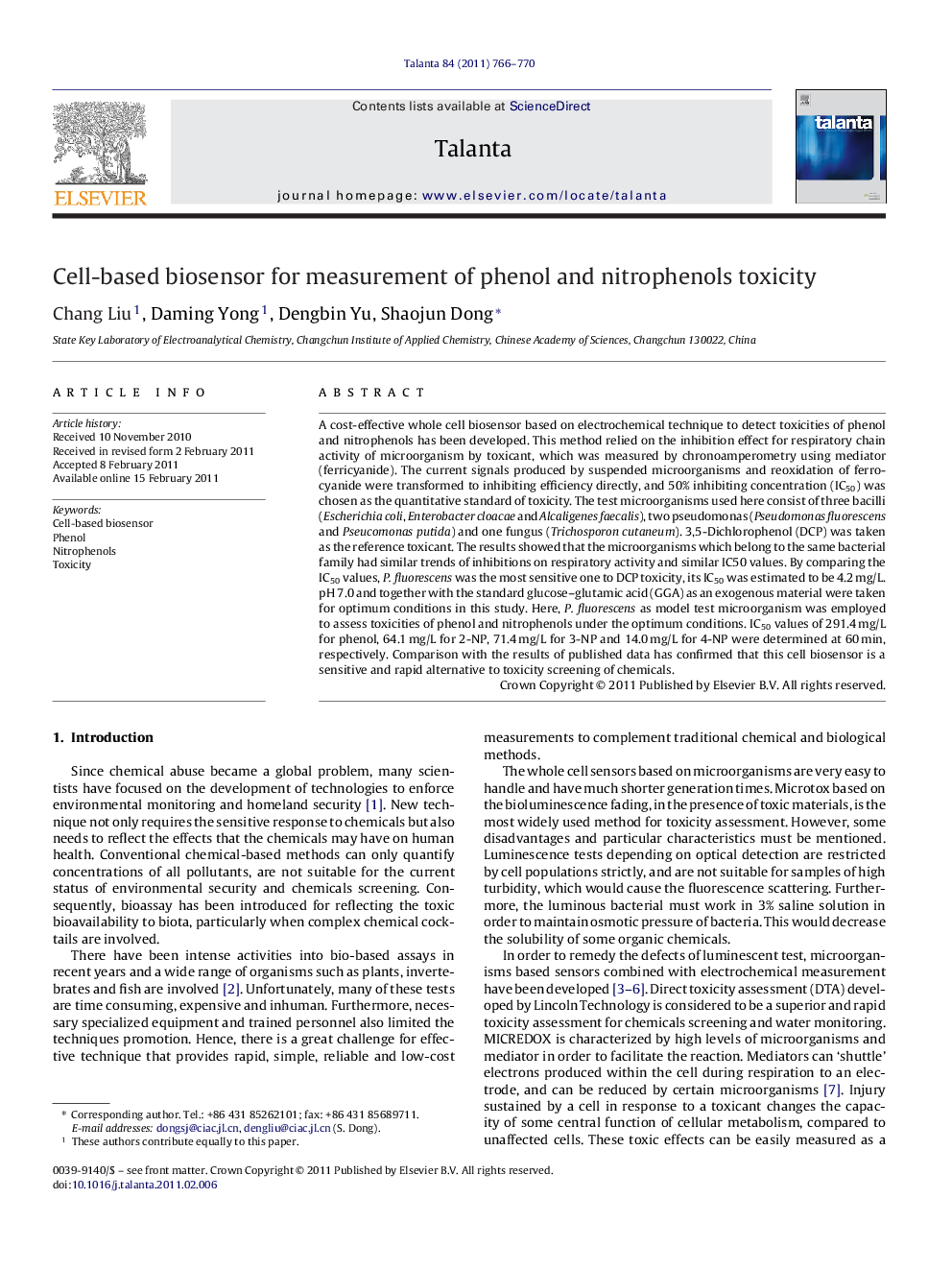| Article ID | Journal | Published Year | Pages | File Type |
|---|---|---|---|---|
| 1244168 | Talanta | 2011 | 5 Pages |
A cost-effective whole cell biosensor based on electrochemical technique to detect toxicities of phenol and nitrophenols has been developed. This method relied on the inhibition effect for respiratory chain activity of microorganism by toxicant, which was measured by chronoamperometry using mediator (ferricyanide). The current signals produced by suspended microorganisms and reoxidation of ferrocyanide were transformed to inhibiting efficiency directly, and 50% inhibiting concentration (IC50) was chosen as the quantitative standard of toxicity. The test microorganisms used here consist of three bacilli (Escherichia coli, Enterobacter cloacae and Alcaligenes faecalis), two pseudomonas (Pseudomonas fluorescens and Pseucomonas putida) and one fungus (Trichosporon cutaneum). 3,5-Dichlorophenol (DCP) was taken as the reference toxicant. The results showed that the microorganisms which belong to the same bacterial family had similar trends of inhibitions on respiratory activity and similar IC50 values. By comparing the IC50 values, P. fluorescens was the most sensitive one to DCP toxicity, its IC50 was estimated to be 4.2 mg/L. pH 7.0 and together with the standard glucose–glutamic acid (GGA) as an exogenous material were taken for optimum conditions in this study. Here, P. fluorescens as model test microorganism was employed to assess toxicities of phenol and nitrophenols under the optimum conditions. IC50 values of 291.4 mg/L for phenol, 64.1 mg/L for 2-NP, 71.4 mg/L for 3-NP and 14.0 mg/L for 4-NP were determined at 60 min, respectively. Comparison with the results of published data has confirmed that this cell biosensor is a sensitive and rapid alternative to toxicity screening of chemicals.
